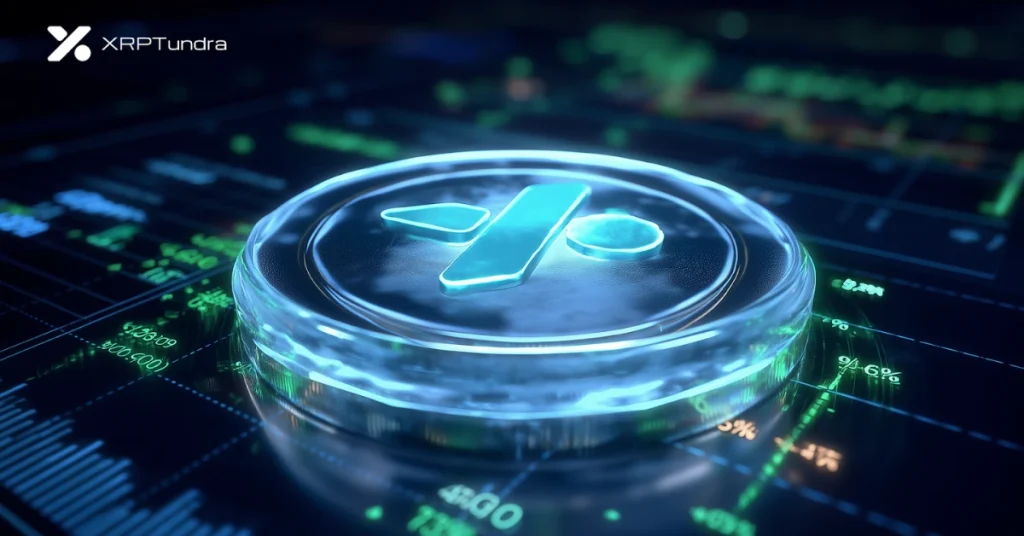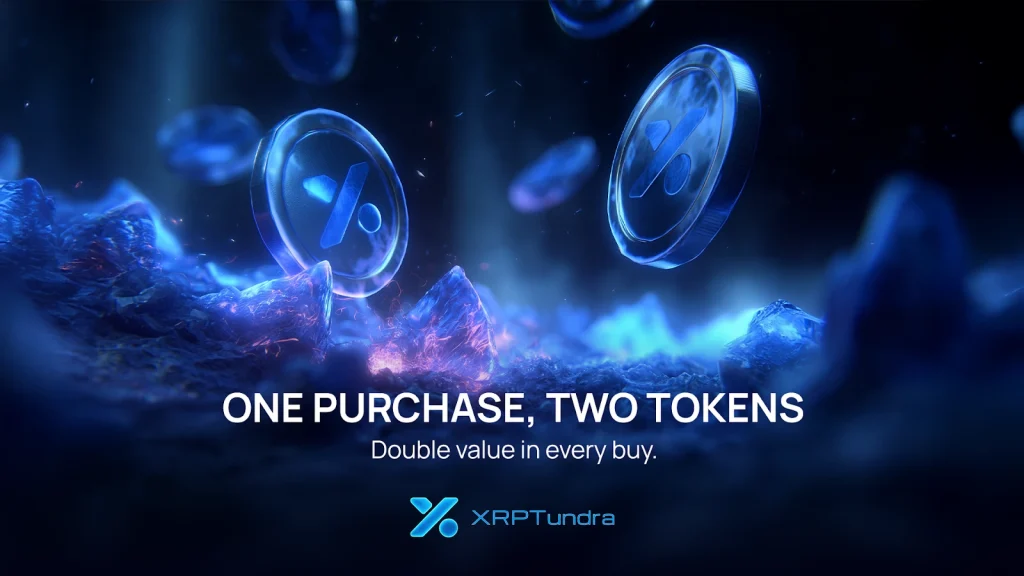Crypto Calculator Shows XRP Tundra Presale Could Outperform Pepe’s Historic Run

The post Crypto Calculator Shows XRP Tundra Presale Could Outperform Pepe’s Historic Run appeared first on Coinpedia Fintech News
In 2023, Pepe Coin (PEPE) stunned the market by turning a meme into a billion-dollar asset almost overnight. Early holders saw life-changing returns, with gains measured in thousands of percent as the token rode the cultural wave of meme-driven hype. Exchanges rushed to list it, communities formed around it, and headlines touted its parabolic rise.
Yet as fast as it climbed, Pepe’s path was unpredictable. Returns depended entirely on timing, with latecomers often trapped by volatile swings. That unpredictability remains the hallmark of meme assets: fortunes can be made, but equally quickly erased.
This is the contrast crypto analysts now draw with XRP Tundra’s presale, where upside is not left to speculation. Instead, the project defines launch prices in advance, ties rewards to staking mechanics, and builds protections against volatility. Unlike Pepe’s unpredictable surge, XRP Tundra’s presale defines its upside in advance, giving investors a clear framework for measuring potential returns.
The Pepe Example: Meme Multiples Without a Map
Pepe Coin’s explosion highlighted how community energy can push a token into major exchanges within weeks. Launched with no roadmap or utility, it still reached a market cap exceeding $1 billion at peak. Holders who bought in the earliest stages turned a few hundred dollars into six- or seven-figure sums.

The downside was equally clear: with no fixed structure or staking ecosystem, Pepe’s value depended purely on market momentum. Those who bought late or failed to exit during peaks saw much of their paper gains vanish. This volatility is what XRP Tundra seeks to resolve through engineered presale economics.
Presale Multipliers Defined Before Launch
Tundra’s design offers investors something Pepe never did: predefined launch valuations. In Phase 5, buyers acquire TUNDRA-S at $0.091 with a 15% token bonus, plus free TUNDRA-X allocations valued at $0.0455. At launch, the prices are fixed — $2.50 for TUNDRA-S and $1.25 for TUNDRA-X.
The difference between entry and launch pricing can be calculated in advance. A $100 allocation today secures thousands of tokens whose listing value is already set, rather than guessed. Analysts point to this as the “presale calculator secret” that makes Tundra’s upside more measurable — and potentially larger — than speculative meme rallies.
Staking Access That Pepe Never Offered
Where Pepe was only tradable, XRP Tundra introduces Cryo Vault staking. Holders can commit XRP for 7 to 90 days, earning rewards that scale with lock duration. Frost Keys, NFT boosters, further enhance yields or shorten lock-ups, raising potential returns to 30% APY.
Though staking is not live yet, presale buyers lock in guaranteed access to vaults once activated. This distinction is crucial: presale participants aren’t just betting on price action, they’re reserving yield streams tied directly to XRP Ledger infrastructure.

Another weakness of meme launches like Pepe is the chaos of early trading. XRP Tundra integrates Meteora’s DAMM V2 liquidity pools to prevent dumping and bot exploitation. Fees start high — up to 50% — and decline over time, discouraging early selling while rewarding long-term holders.
Liquidity positions are tokenized as NFTs, ensuring transparency and flexibility, while permanent lock options guarantee depth. Fees from early trades flow back into Cryo Vault staking, converting volatility into yield for the community.
Independent Audits Reinforce Trust
Transparency further separates Tundra from meme-driven rallies. Independent reviews by Cyberscope, Solidproof, and Freshcoins confirm tokenomics and contract design. The team’s identity has also been verified through Vital Block KYC, with documents published publicly.
This oversight ensures that the presale is backed by code, audits, and verified people — protections absent in meme-only projects like Pepe.
Crypto Analysts Favor XRP Tundra
Independent commentators, including Crypto Royal, note that a simple presale-to-launch calculation shows XRP Tundra with defined multiples exceeding what Pepe offered at random. Where Pepe relied on luck and viral timing, Tundra builds wealth pathways into its architecture.
For investors, the question is not whether the market will recreate another meme rally, but whether defined multipliers and staking mechanics present a more sustainable route. Many experts believe the numbers lean heavily in Tundra’s favor.
Secure Presale Access Before the Phase Ends
Pepe’s rise proved that memes can mint millionaires, but XRP Tundra is showing how defined mechanics can build fortunes with less guesswork. With Phase 5 nearing completion, the chance to secure discounted TUNDRA-S, free TUNDRA-X, and Cryo Vault access is limited.
Website: https://www.xrptundra.com/
Medium: https://medium.com/@xrptundra
Telegram: https://t.me/xrptundra
X: https://x.com/Xrptundra
Contact: Tim Fénix, contact@xrptundra.com
You May Also Like

Michigan’s Stalled Reserve Bill Advances After 7 Months

The SEC Finally Approves Investment Giant Grayscale’s Multi-Crypto Fund! What Altcoins Does the Fund Contain? Here Are the Details
